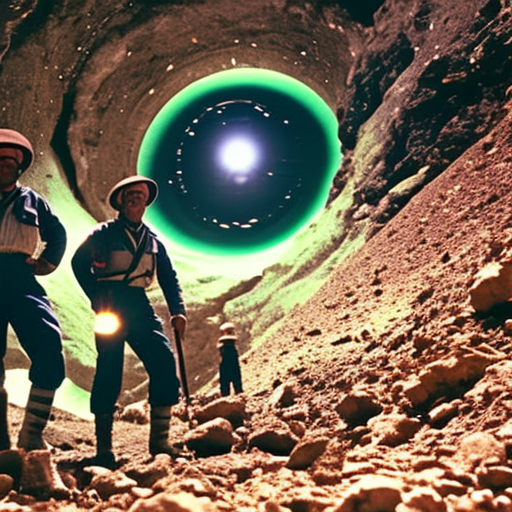Asteroid mining: Asteroid mining refers to the extraction of valuable resources from asteroids, which are rocky bodies that orbit the Sun. This emerging industry has the potential to provide a sustainable source of rare metals and minerals, as well as water and other resources, for use both in space and on Earth.
Why mine asteroids?
Asteroids are rich in valuable resources such as platinum, gold, and rare earth metals, which are becoming increasingly scarce on Earth. Additionally, asteroids contain water, which can be used to sustain human life in space and produce rocket fuel. By mining asteroids, we can tap into these resources and potentially alleviate resource shortages on Earth while also enabling the expansion of human activities in space.
Challenges and opportunities
Asteroid mining poses numerous technical, economic, and legal challenges. The first challenge is identifying suitable asteroids to mine. Scientists and engineers are developing methods to locate and characterize asteroids that are rich in resources and have orbits that make them accessible for mining missions. Once a suitable asteroid is identified, the next challenge is developing the technology to extract and process the resources. This involves designing robotic systems capable of navigating and mining asteroids, as well as developing methods to transport the extracted materials back to Earth or to other locations in space.
Despite these challenges, asteroid mining presents significant opportunities. The resources found on asteroids could potentially be worth trillions of dollars, providing a lucrative market for companies involved in the industry. Furthermore, asteroid mining could enable the establishment of permanent human settlements in space, as the resources extracted could be used to sustain life and support industrial activities.
Methods of asteroid mining
There are several proposed methods for mining asteroids. One approach is to send robotic spacecraft to land on asteroids and extract resources using drills, crushers, and other mining equipment. Another method involves capturing an entire asteroid and bringing it closer to Earth or the Moon, where mining operations can be conducted more easily. Some researchers are also exploring the idea of using 3D printing technology to construct structures and tools directly from the raw materials found on asteroids.
Legal and ethical considerations
The legal framework surrounding asteroid mining is still evolving. The Outer Space Treaty, signed by most spacefaring nations, prohibits the ownership of celestial bodies, including asteroids. However, it does not explicitly address the issue of resource extraction. Some countries, such as the United States and Luxembourg, have passed laws that grant property rights to companies for resources they extract from asteroids. This has sparked debates about the potential exploitation of space resources and the need for international cooperation and regulation.
From an ethical standpoint, asteroid mining raises questions about the preservation of celestial bodies and the potential environmental impact of resource extraction. Some argue that asteroids should be protected as scientific and cultural heritage, while others believe that the benefits of resource extraction outweigh the potential risks.
The future of asteroid mining
Asteroid mining is still in its early stages, but it holds great promise for the future. As technology advances and the costs of space exploration and resource extraction decrease, asteroid mining could become a viable industry. Companies such as Planetary Resources and Deep Space Industries are already working on developing the necessary technologies and infrastructure for asteroid mining. In the coming decades, we may see the first commercial mining missions to asteroids, paving the way for a new era of resource utilization and space exploration.












